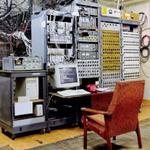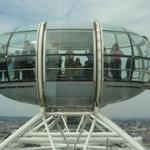@Nemon Sollen sich eigentlich andere Forensiker und Pathologen, die nicht deiner Meinung sind, auch schämen?
Der Gerichtsmediziner (Moscow Bureau of Forensic Expertise Sergey Nikitin), der die Exhumierung von Zolotarev durchgeführt hat, hat eindeutig festgehalten, dass die Kraft von oben kam, während Z. auf dem Boden lag.
GS: In what position was the person at the time of injury?
SN: It can be undoubtedly said that he was lying on his back. And the traumatic effect occurred from front to back, maybe some what from right to left.
GS: The surface on which the person was lying was relatively firm?
SN: Yes. It is unlikely that he was lying in the snow.
GS: You found that not all ribs are broken equally. Is it possible to say that the force that acted on the thorax in full force acted where the ribs are completely broken? And where they didn't brake completely, it seems like the impact was less?
SN: The ribs on the axillary line have broken as a result of excessive bending. This is called the flexural nature of the fractures. In the parasternal line, the character of the fractures was extensor. This suggests that the traumatic event occurred at the time when the person was lying on his back, and suggests the direction where the mass came from.
GS: Like as if squeezed a concrete slab? Or is it from the compression of a blow? There is a theory that a lot of snow has fallen.
SN: Was it impact or slow squeezing that took some time? When the corpse is examined not to the extent of decomposition in which the corpse of Zolotaryov was at the time of the autopsy, there are soft tissues, subcutaneous fatty tissue, one can estimate the hemorrhage into the subcutaneous fatty tissue. If it was a blow, we would see hemorrhages in the muscles and subcutaneous fatty tissue. If this mass of the snow layer type squeezed gradually, it is unlikely that we would see hemorrhaging.
GS: Hemorrhages were noted at the autopsy. And on histology, and in the act.
SN: This suggests that it was a sudden pressure, a velocity impact. Not gradual.
Cor: It's like a blow, lets say, by a car?
SN: A car is a comparison. In our case, we can say that this was the impact of a large mass.
GS: Could it be caused by explosive blast?
SN: It can be safely excluded. Injuries would be of a different nature.
https://dyatlovpass.com/zolotaryov-exhumation-2Darüber hinaus hat sich eine größere Anzahl von Medizinern und Pathologen zu diesen Brustverletzungen (siehe dazu z.B. Lobatchev). Niemand spricht von Sturzverletzungen, da auch keine typischen Verletzungen am Kopf oder an den Extremitäten auftreten.
Du bist irgendwo falsch abgebogen, wenn du meinst du kannst hier permanent die Expertise anderer (über die du nicht verfügst) in Abrede stellen. Wenn du bei einer öffentlichen Diskussionsveranstaltung solche fatalistischen Positionen vertrittst, die keinen Bezug zu Expertenaussagen aufweisen, wirst du irgendwann höflich von der Bühne gebeten werden.
Ivanov hat übrigens klargestellt, dass der offizielle Untersuchungsbericht große Lücken beinhaltet. Die Autopsieberichte führen auch nicht explizit Stürze für die Brustverletzung als wahrscheinlichste Variante an.
Dubinina:
...... aus Autopsiereport
....during life and is the result of high force impact with subsequent fall....
Weißt du was das Wort subsequent bedeutet?


Apple40 schrieb:Es war jedem klar, dass es in dieser Nacht, kein Überleben geben konnte. Im Bewusstsein des bevorstehenden Todes, erlitten einige Gruppenmitglieder die „Akute Belastungs-Reaktion“, die durch Gruppendynamik auf Alle übergriff und zu einer gewissen Bewusstseinseinengung, einer eingeschränkten Aufmerksamkeit, einer Unfähigkeit, Reize zu verarbeiten, Lethargie und Desorientiertheit führte. Die Folgen sind unlogische, sinnlose Handlungen und Fluchtreaktionen. Diese Reaktion kann innerhalb von Minuten auftreten aber auch innerhalb von kurzer Zeit individuell verschwinden


